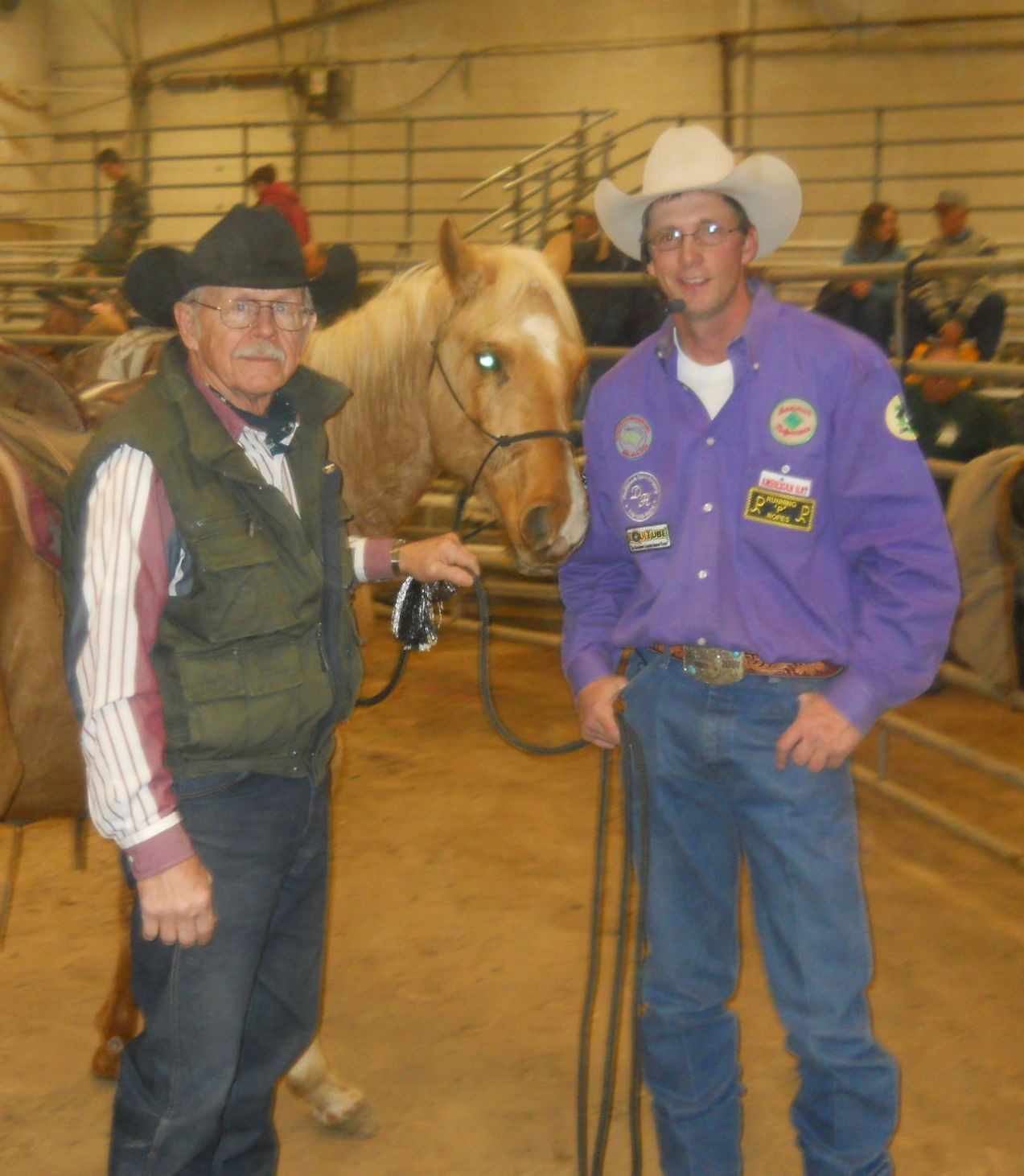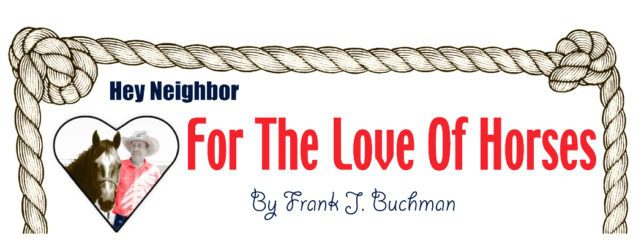“Breaking a horse to ride takes less than 20 minutes.”
That’s the way it probably seemed to many of those watching Scott Daily at the first of his six colt-starting sessions during the recent Topeka Farm Show.

A coming three-year-old palomino Quarter Horse filly, owned by Mike Mikos of Eskridge, had been handled some, and would lead if followed behind, when the Arkansas City horse trainer put his loose-fitting, nylon-rope halter, with attached long lead-rope, on her.
Showing little resistance, the mare was moved around the portable pen both directions at three gaits, when persuaded with a small flag on a five-foot flexible pole.
Bringing her beside him, Daily guided the filly to “flex” both directions from either side, and rubbed her with his hands and the lead shank.
Continuing with “more pressure,” while extending across her back from both sides, the palomino “wallowed” him in slight agitation. So, without reserve, Daily “sacked” her out with the saddle pad, and soon had his saddle on the mare’s back, causing a notable flinch.
Moving the saddle around, Daily pulled the chinch snug, went to the right side for adjustments, came back and tightened the girth more.
Without ever moving the saddled mare around the pen, Daily tied his lead-rope to the halter in reins-fashion, and stepped into the left stirrup, as the mare balanced herself.
Dismounting, and instantly remounting, Daily credited, “She never moved that time. She’s learned to brace against my weight. This is a fast-learning horse.”
Stepping off, the trainer did the exact same procedure on the right side, noting, “It is awkward for me on this side, as well as for the horse, because most handling is done from a horse’s left side.”
Again, Daily dismounted and quickly got back into the saddle, then gently tugged the mare’s head with the halter, so she “flexed” similar to earlier groundwork.
“Good job,” Daily credited, as he rubbed the mare’s neck after getting off the right side, and moving her around in both directions.
Without hesitation, the cowboy stepped up into the saddle from the left stirrup. “Now, she needs to take a step forward, relax and free up some,” he advised. “I want her to know I’m here, and expecting her to respond to my instructions.”
Before spectators could comprehend, Daily squeezed his legs, and the young mare moved around the pen at a walk. He soon nudged her into a trot, and after only two circles, exaggerated his cues, so she quickly extended into a left lead lope.
“She’s a fast-learning horse,” Daily acknowledged once more. “Now, she has to go in the opposite direction.”
Bringing his mount out of a lope, Daily helped her turn, urged the mare forward, soon had her trotting, and shortly increased the gait to a correct lead right canter.
Just 10 minutes into the training sessions, Daily insisted, “Well, she has to learn some other things, too.”
Dropping his lariat from the saddle, Daily built a big loop and swung it around the mare’s head, which she shook and shied away at first, but then stood relaxed.
“The filly figured out it wasn’t going to hurt her, so why should she be frightened,” critiqued the trainer, as he moved his mount around the pen, while swinging the rope.
“That’s good. I thought the filly might not be this tolerant, because she was pressuring me so much when I started. The mare had some power over me on the ground, but since I’m on her back, she’s decided I’m in control, and just wants to please,” the trainer explained.
A bull whip on his saddle was detached, as Daily contended, “We might as well see what she thinks of this.”
Again, there was a white-eyed look from the filly shaking her head the first few times Daily swung the whip around. “She thinks this is going to get her, but it isn’t,” evaluated the trainer, who soon was cracking the whip, first from the left, and then the right.
“She has confidence in me now,” appreciated Daily, as he stood up in the saddle, congenially removed his hat, concluding: “Thank you Topeka, Kansas. You’re welcome to come to my booth to ask questions.”
It was 10 minutes until 1 o’clock, with the session having started at 12:30.
Questioned about what the mare might be like the next time he decided to ride her, Daily forecasted: “I think she’ll do even better.”
After many years of working with challenging horses, Daily has developed and perfected his own techniques.
“The objective is to eliminate fear and build trust between the horse and rider, which allows the horse to progress in a positive and willing manner,” Daily summarized.
Married to wife, Brandi, and with a daughter, Lakota Sue, Daily works more than 200 horses a year.
